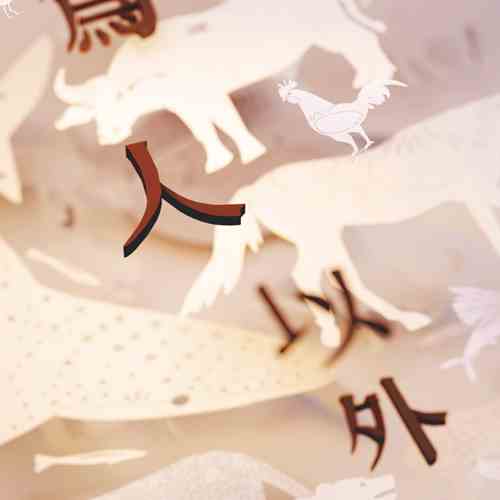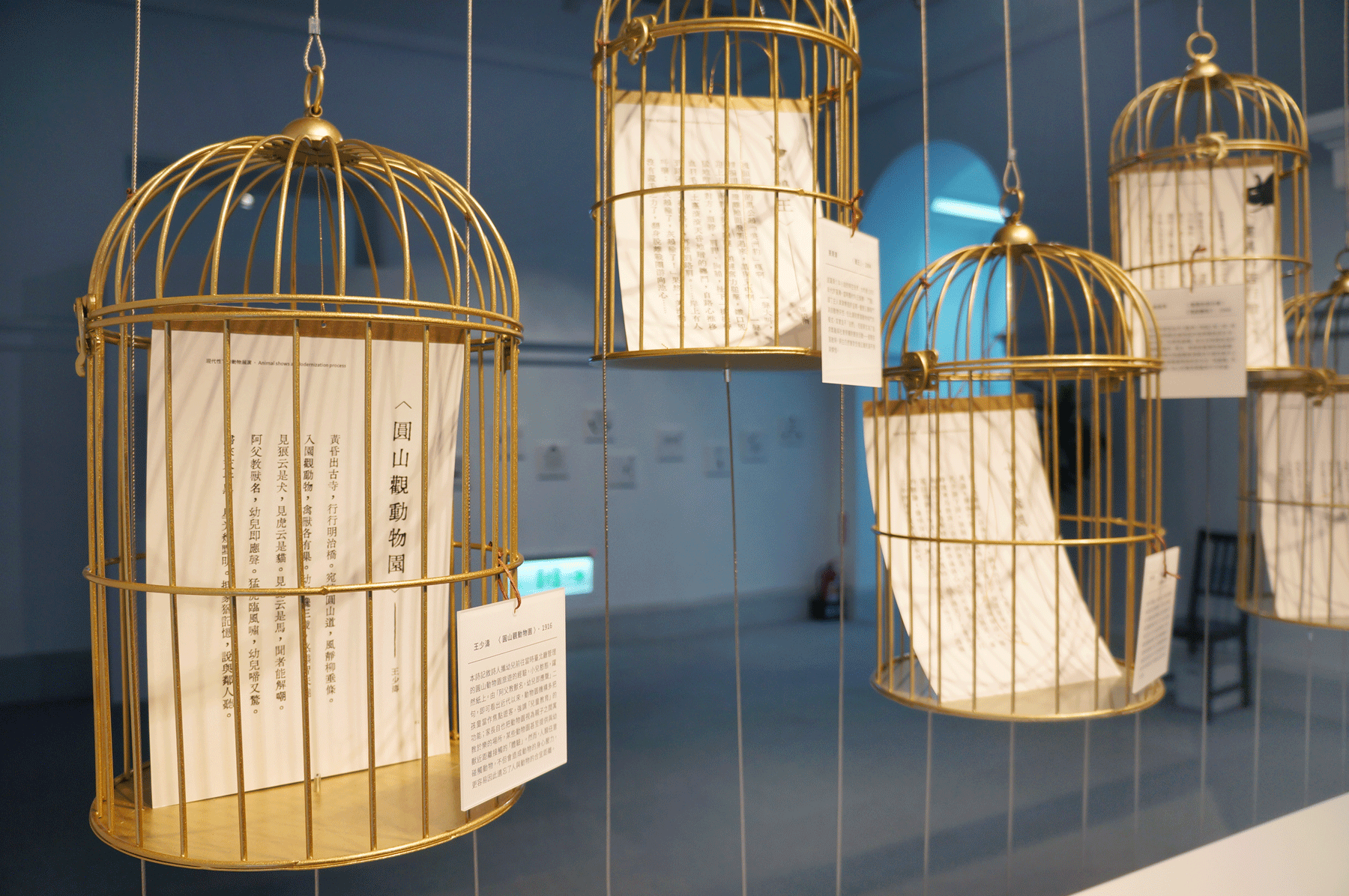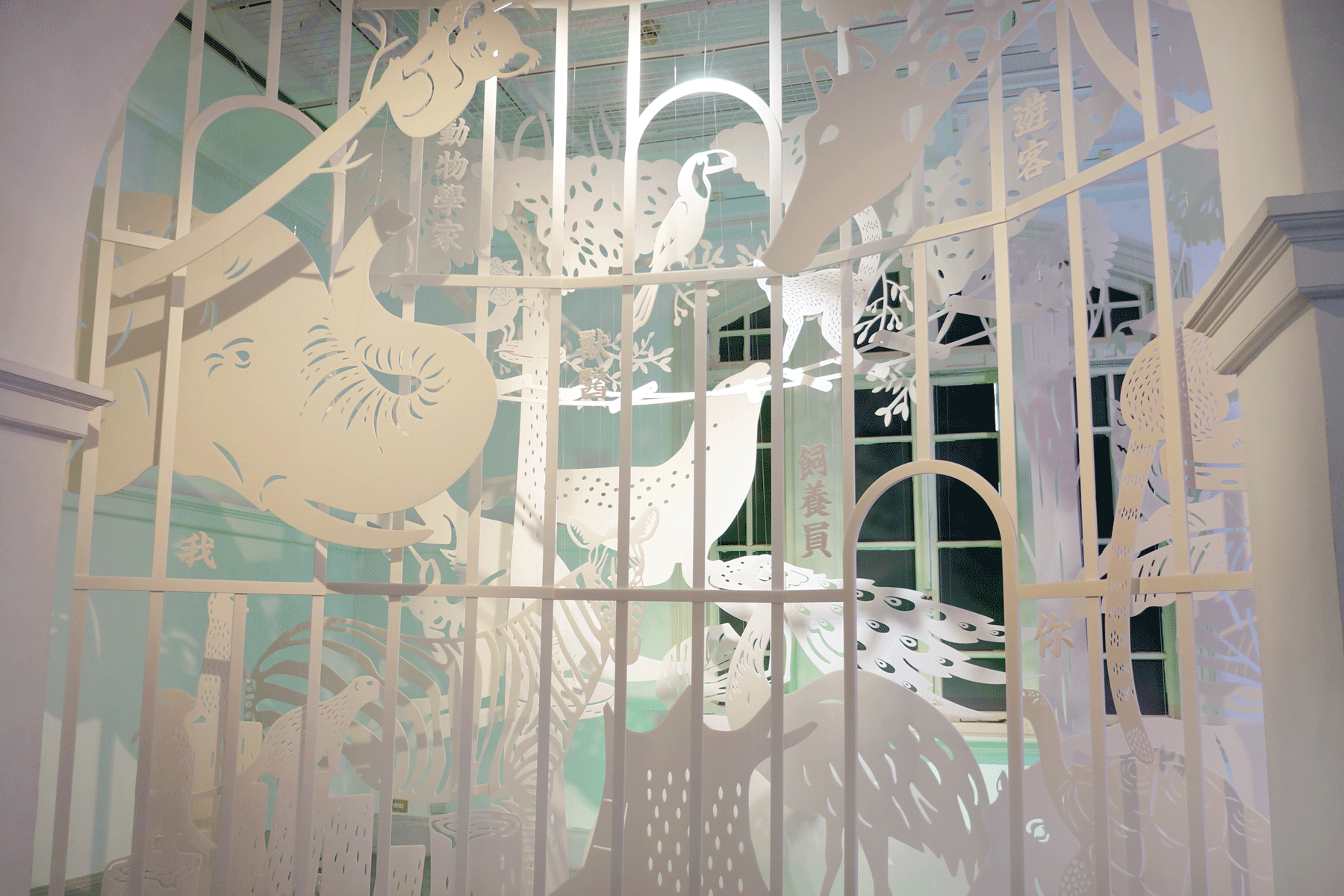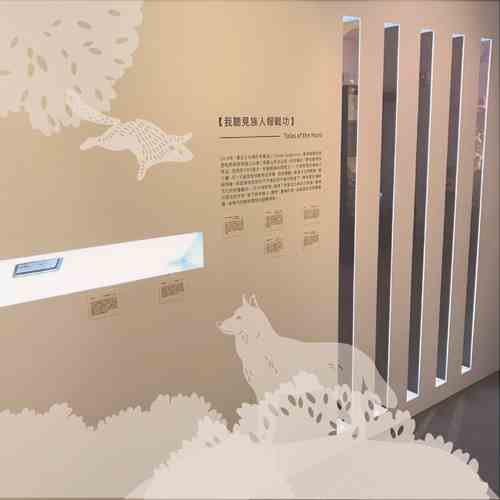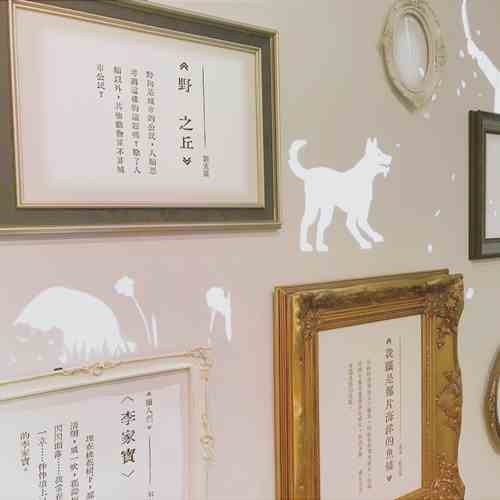Animals as Entertainment|Animals shows as Modernization process|Safeguarding Animal Rights and Welfare
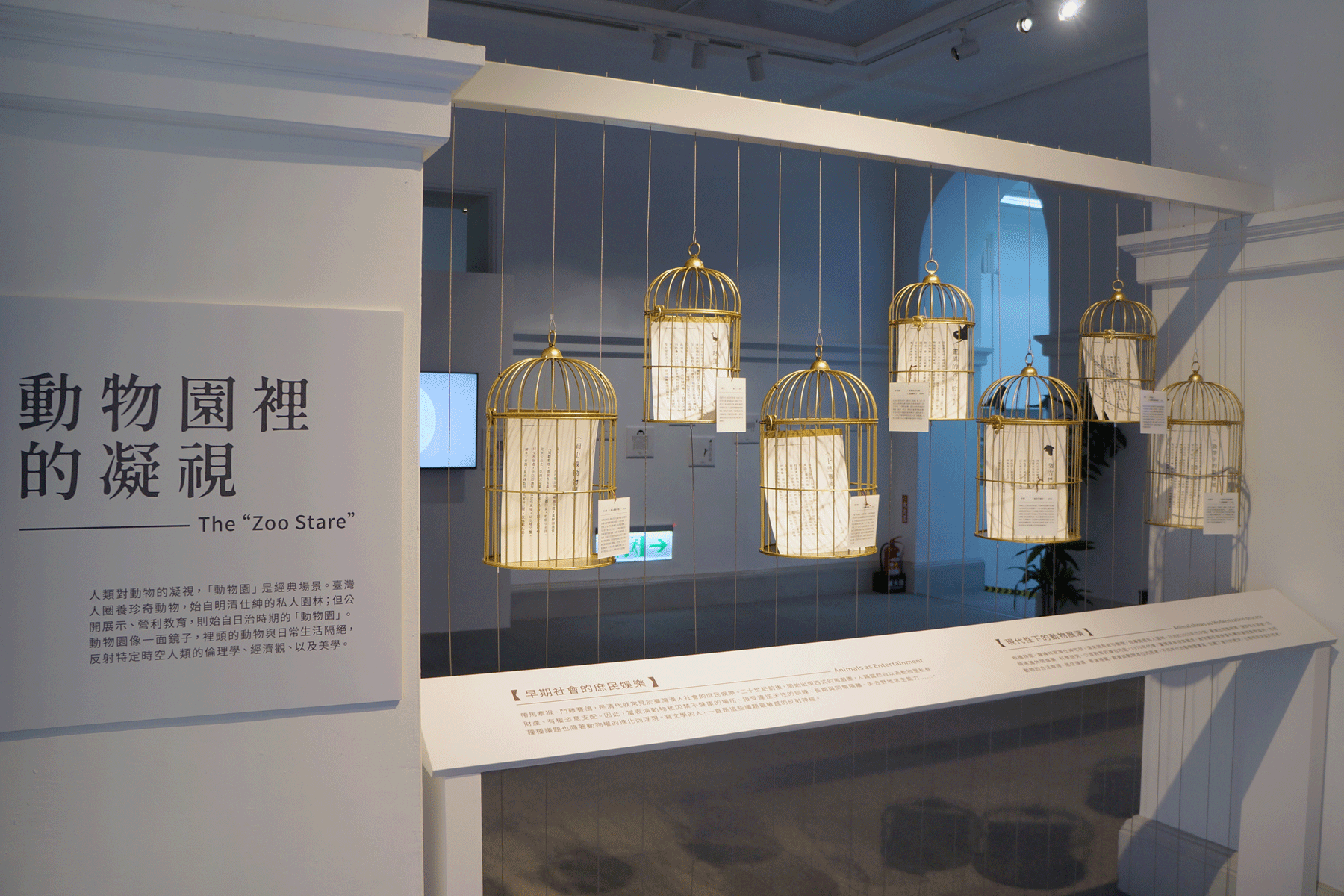
Zoos are where many humans get their first look at, and develop their first impressions of, animals. Although Taiwanese of means began keeping rare and exotic animals in their private gardens as early as the 17th century, the public display of wild animals for profit and public education only began with the opening of the Maruyama Zoo in Taipei in 1914.
A zoo is like a mirror. While the animals inside exist separate from us, their everyday experience is inseparably bound to our contemporary ethical, economic, and aesthetic perspectives.
✧ Animals as Entertainment
Horse & monkey performances, cockfights, and pigeon races were common entertainments for the Han Chinese in Taiwan during the Qing Dynasty. Also, Western-style circuses started performing on the island around the turn of the 20th century. Animals held in captivity were deemed private property and, without inherent rights, were regularly kept in unsanitary conditions, brutally trained, isolated for long periods, and left unable to survive in the wild. However, as social awareness of animal welfare and rights grew, the myriad of problems entangled with using animals as entertainment were gradually exposed to the light of day. Authors have consistently been on the progressive frontlines of this issue, providing sensitive and penetrating insights into the world of animal entertainment.
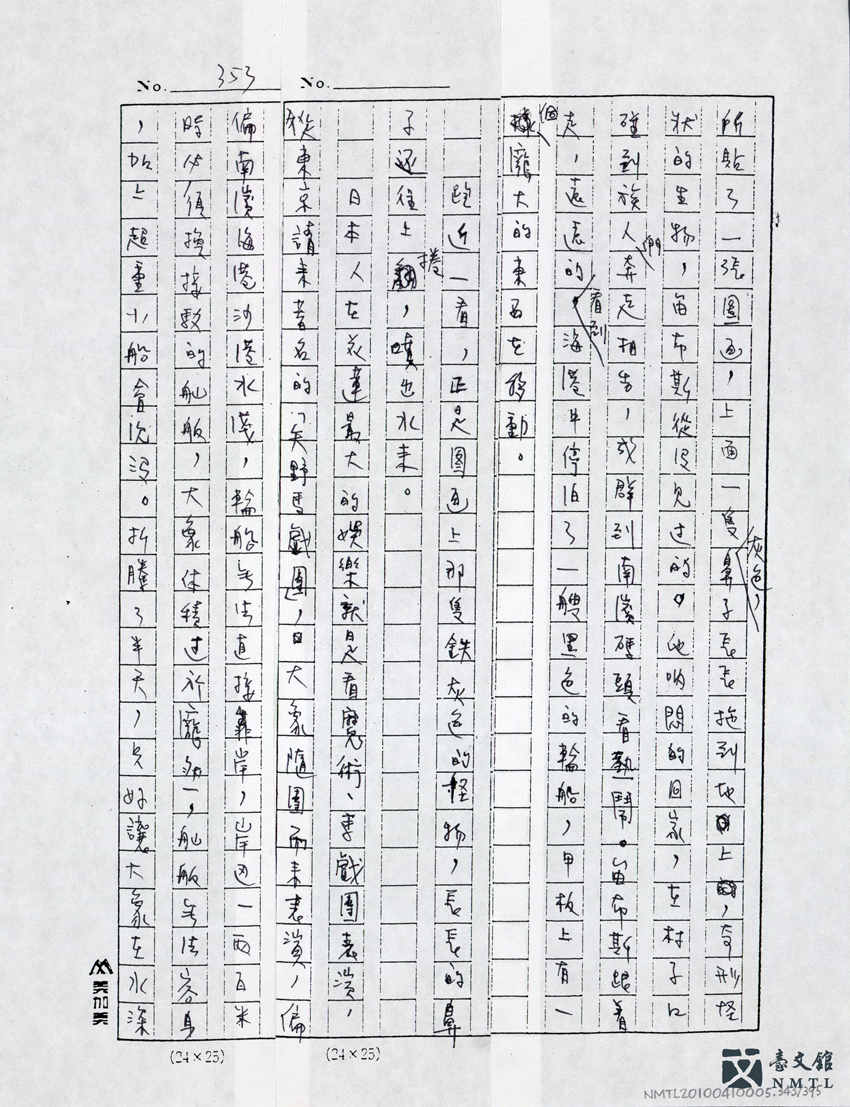
⁍ THE DUST BEFORE THE WIND, BOOK 2 of the TAIWAN TRILOGY, by Shih Shu-ching
The article describes the shocking feeling of children when they see an elephant for the first time, and the stunning imagery that comes into view. The name of the animal is not directly given, but it is being called an unknown and huge "monster", with a "very long, huge nose in iron gray color". There are other descriptions on its appearance, so that readers can guess at just a glance. THE DUST BEFORE THE WIND is Part 2 of the TAIWAN TRILOGY, a series published by the writer in 2008, which tells about the relationships among ethnic groups and life in Hualien during the Japanese Colonial Era from the female perspective. (Donated by Shih Shu-ching / From the National Museum of Taiwan Literature permanent collection)
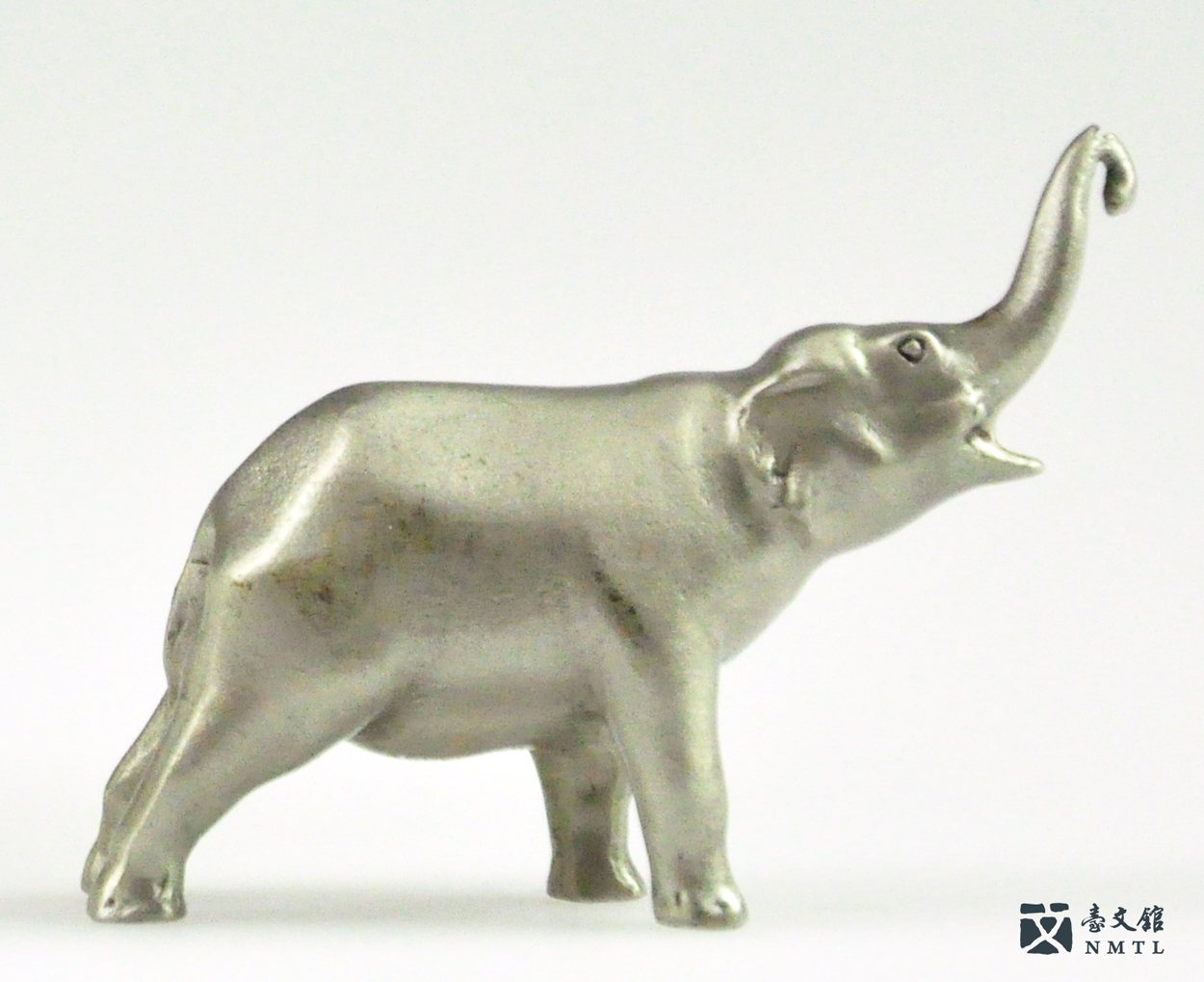
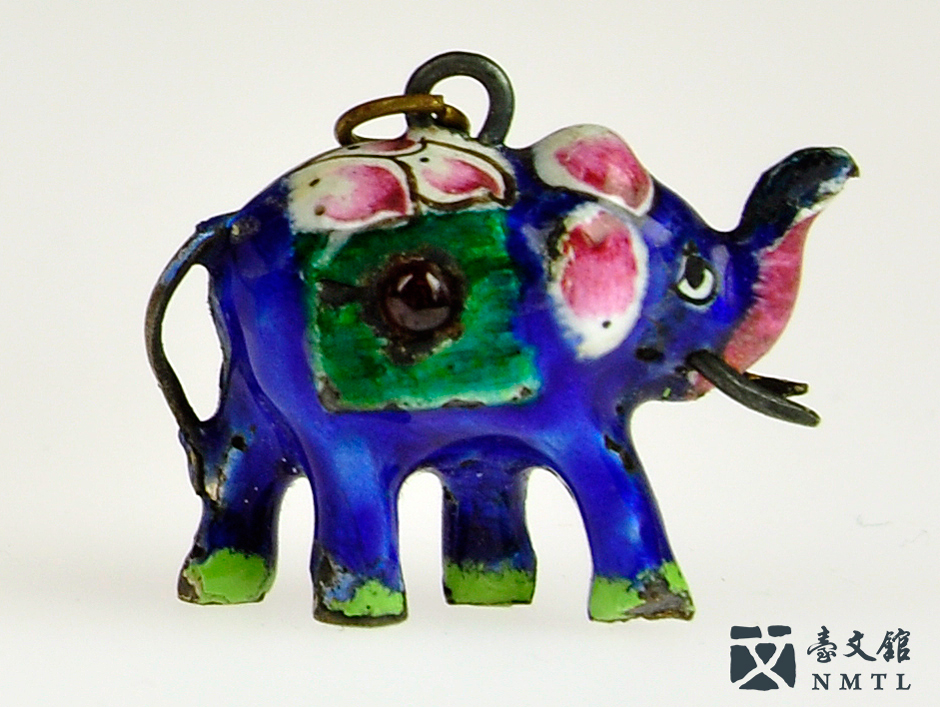
⁍ Elephant Puppet
The color and the action of the elephant on the left is like the description in Shih Shu-ching's DUST BEFORE THE WIND, wherein "the long nose is still rolling up," as if it was spewing water. The elephant on the right shows the commercialization process of elephants in human society, often adding decoration in rich colors to attract attention, while people can actually identify each elephant's uniqueness. This elephant doll was among the collection of Ms. Lin Hai-yin, who loved elephants since she was a child. She has collected more than 1,000 related elephant figures from all over the world, with different materials and postures. (Donated by Hsia Chu-tso, Hsia Tsu-mei, Hsia Tsu-li, Hsia Chu-wei / From the National Museum of Taiwan Literature permanent collection)
✧ Animals shows as Modernization process
In Taiwan during the Qing Dynasty, wealthy clan families not infrequently kept exotic animals as pets and curiosities. The opening of public zoos in the 1910s was followed by public aquariums soon after. The purposes of these included public entertainment as well as scientific research and public education. With rising animal conservation and welfare awareness, Taiwan's zoos after the 1970s shifted their emphasis away from entertainment toward animal welfare. This shift included new requirements that animals be legally acquired, be properly housed, and perform in accordance with regulations meant to protect their welfare and dignity. References to zoos in literary works reflect the values and priorities of their time period as well as the keen observations and insights of their authors.
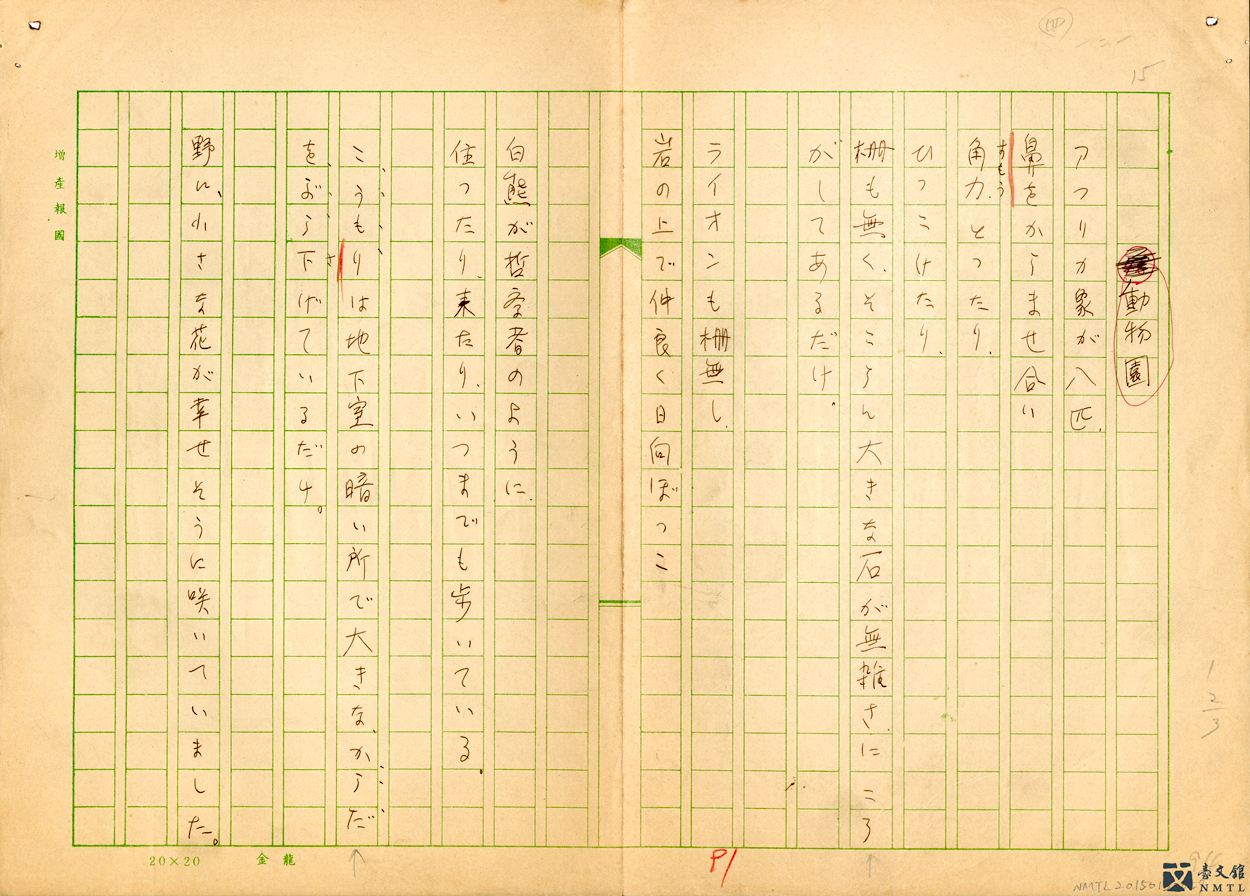
⁍ Manuscript of the poem "The Zoo" by Dupan Fangge
The poet was born during the late period of the Japanese colonial and received her earlier years of education under Japanese rule. Therefore, her early works were often written in Japanese with which she was more familiar. This poem depicts the animals seen in the zoo, describing and comparing the specific features of the animals, and presents the zoo in the beautiful vision of a happy paradise for the general public. The poem shows the imagination and tone of voice with a child-like sincerity. (Donated by Dupan Fangge / From the National Museum of Taiwan Literature permanent collection)
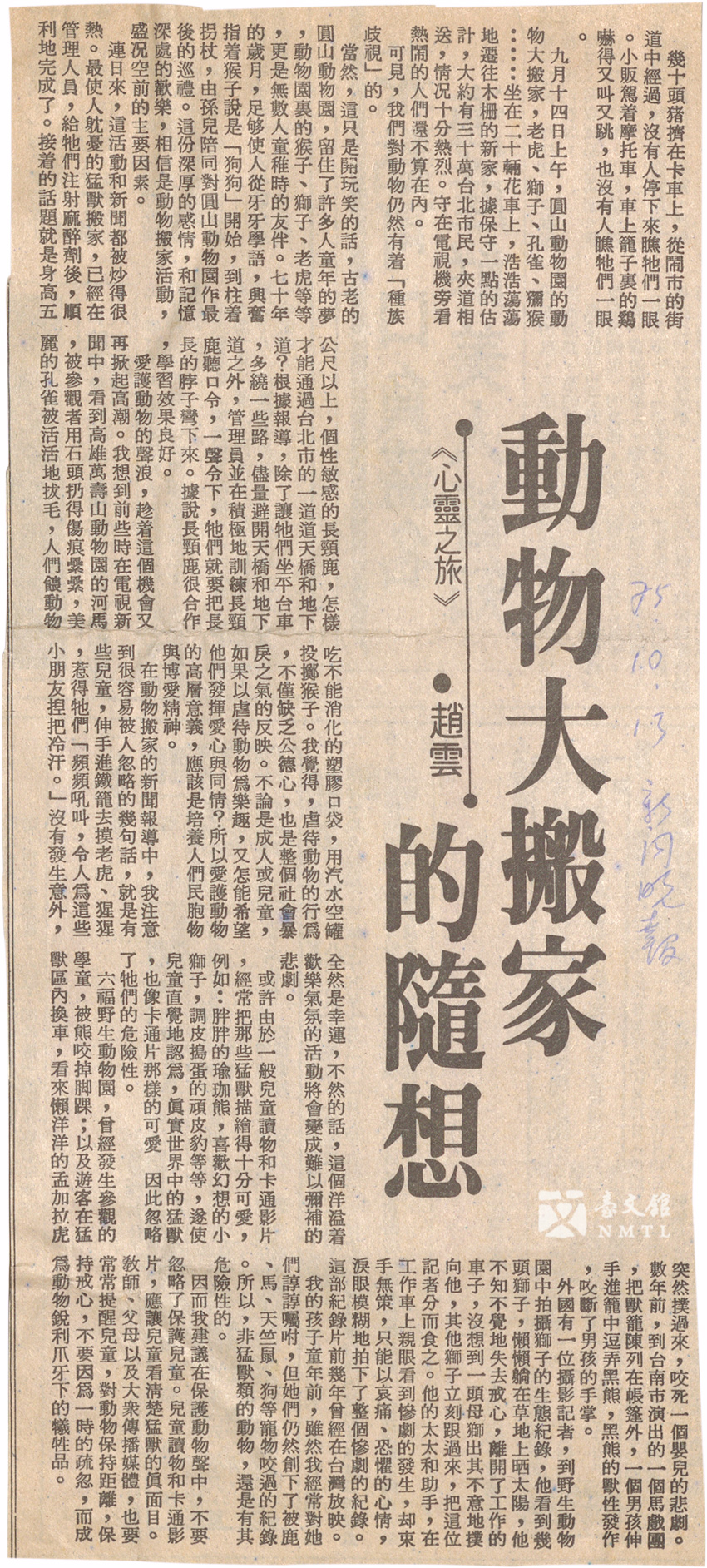
⁍ "Casual Thoughts about The Animals' House-Moving", by Chao Yun
This article was published in the column of "The Spiritual Journey" in the EVENING POST. It called attention to the transportation of economic animals, the relocation of the Taipei Municipal Zoo, the "discrimination of species" among people against different animals, the hippos and peacocks of the Kaohsiung Wanshoushan Zoo being attacked by the public, and the disparity between the commercialization of animals and their natural disposition, which has caused inappropriate injuries to animals. Such aspects were raised in an effort to show most of the human-animal relationship and how animals were treated in the 1980s. (Donated by Chao Yun / From the National Museum of Taiwan Literature permanent collection)
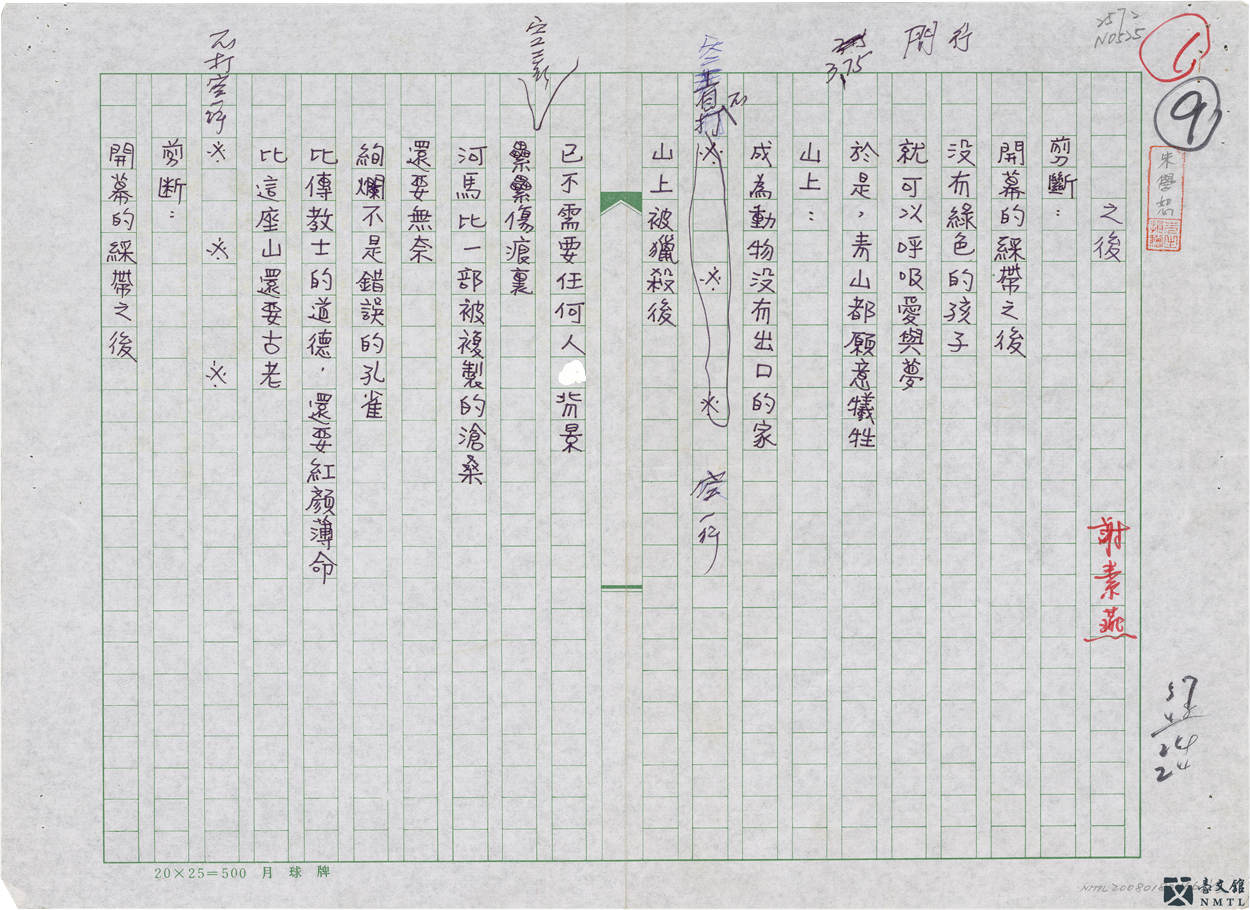
⁍ "After", by Hsieh Su-yen
This manuscript is a poem contributed to the "Oceanic Poetry Magazine". The last remark of the poem notes, "remembering the feeling after the hippo in Shoushan Zoo was injured/the peacock's feathers were being pulled out". The content has repeatedly alluded Kaohsiung's development and changes to "After – the Cutting of the Opening's Ribbon". (Donated by Chu Hsueh-shu, Founder of the Oceanic Poetry Magazine / From the National Museum of Taiwan Literature permanent collection)
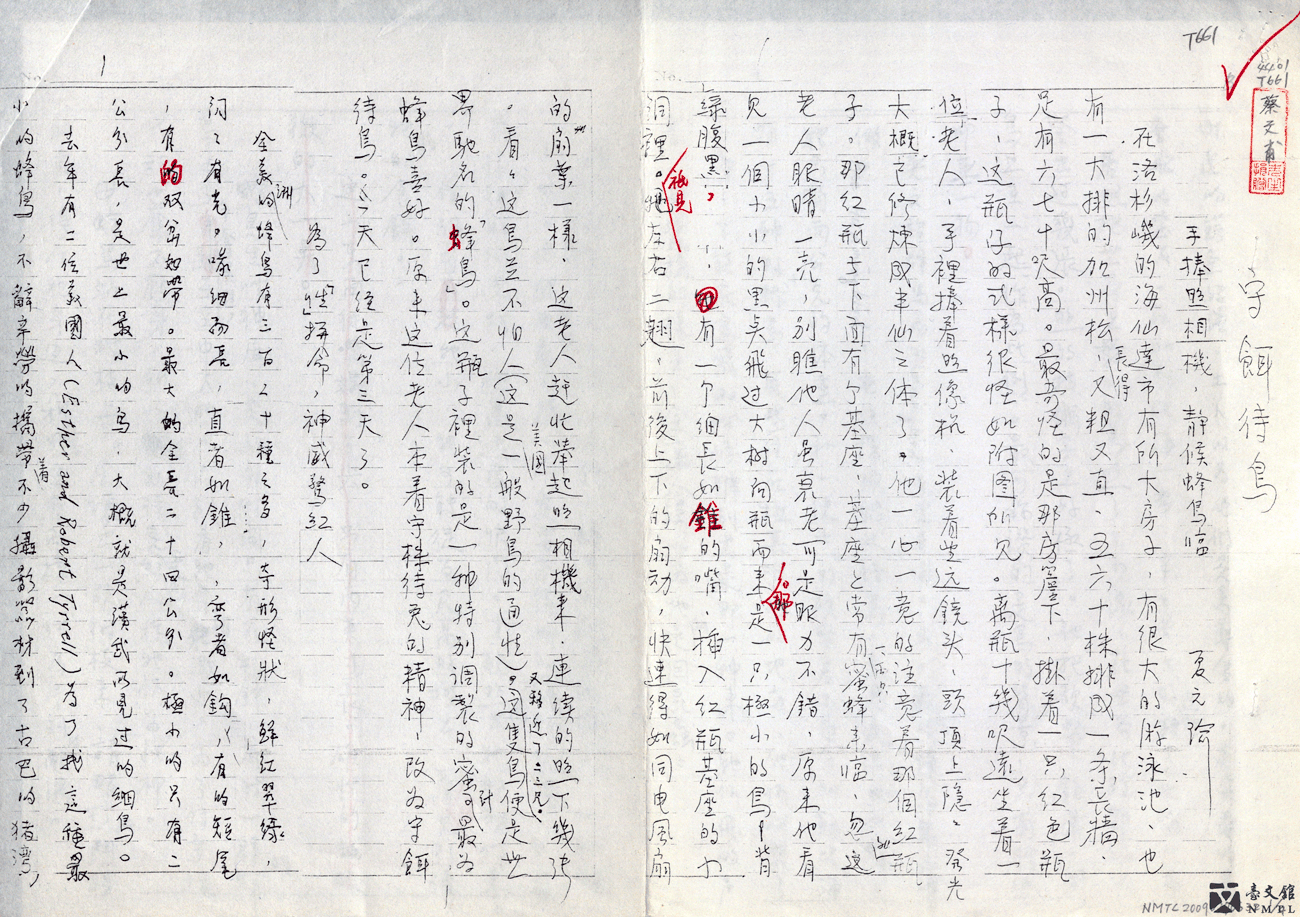
⁍ "Waiting for The Bird by The Bait – Camera in Hand, I Wait for The Coming of The Hummingbird", by Hsia Yuan-yu
The author was previously the Director of the Beijing Zoo (previously named the "Wan Sheng Zoo"). After coming to Taiwan, he devoted himself to the production of specimen, teaching aids and education, and then writing, leaving a few written observations on animals and historical descriptions of specimen production. In this article, the author summarized the characteristics of hummingbirds based on his own experience of photographing hummingbirds while in Los Angeles. Supplemented by the text about small birds found in ancient Chinese books, he presented an elaborate introduction to the hummingbirds. (Donated by Tsai Wen-fu of the Chiuko Publishers / From the National Museum of Taiwan Literature permanent collection)
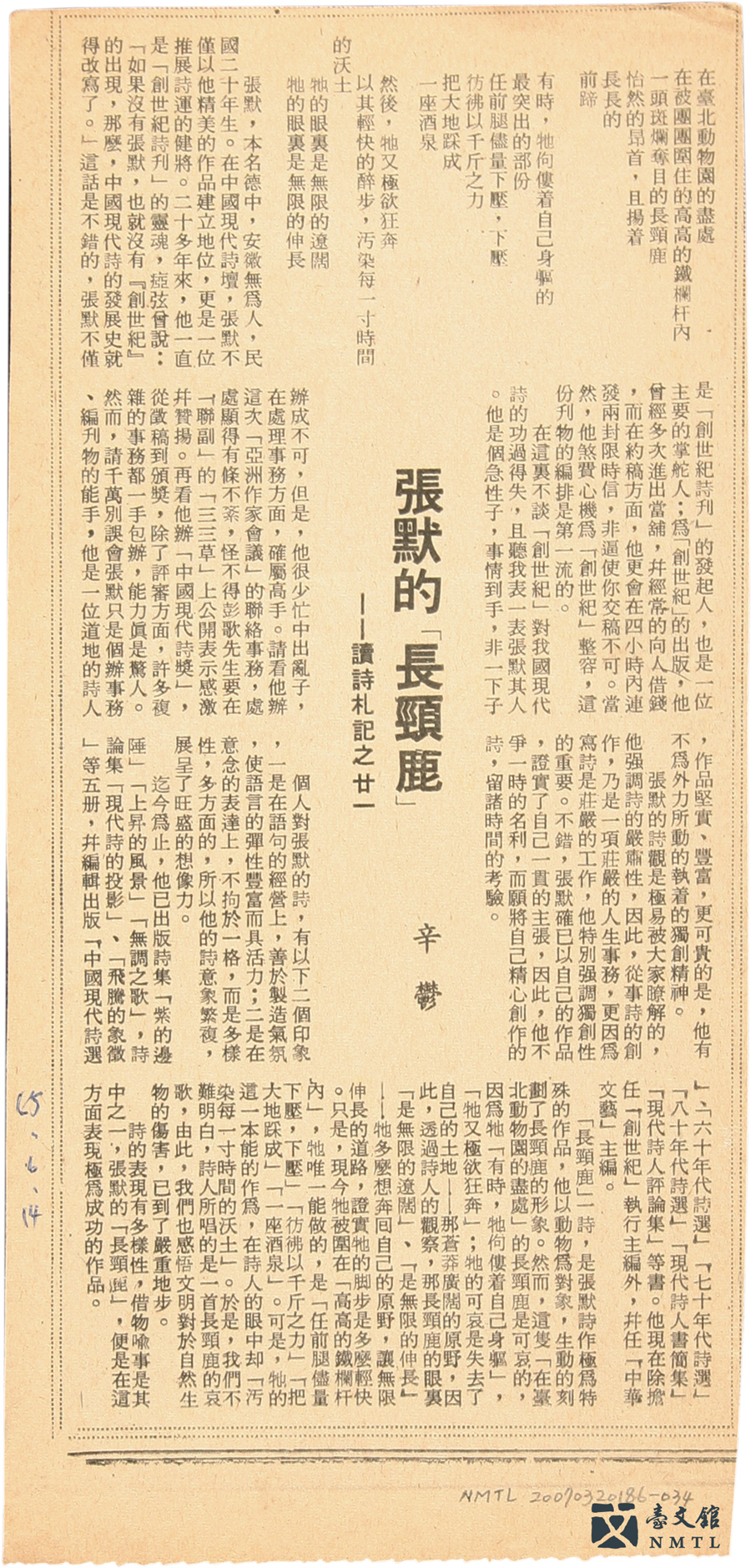
⁍ "Notes on Poetry Reading No. 21 - Chang Mo's 'Giraffe'", by Hsin Yu
This piece is the poet Hsin Yu's commentary on Chang Mo's modern poem "Giraffe". The poem describes the giraffes in the zoo. The first half of the poem is written with literary poetic description; the last two lines bring the readers through the giraffes' vision which stares into the endless wilderness, ironically exposing their sadness within the caged walls, and a longing for the vast land of their original habitat. (Donated by Hsin Yu / From the National Museum of Taiwan Literature permanent collection)
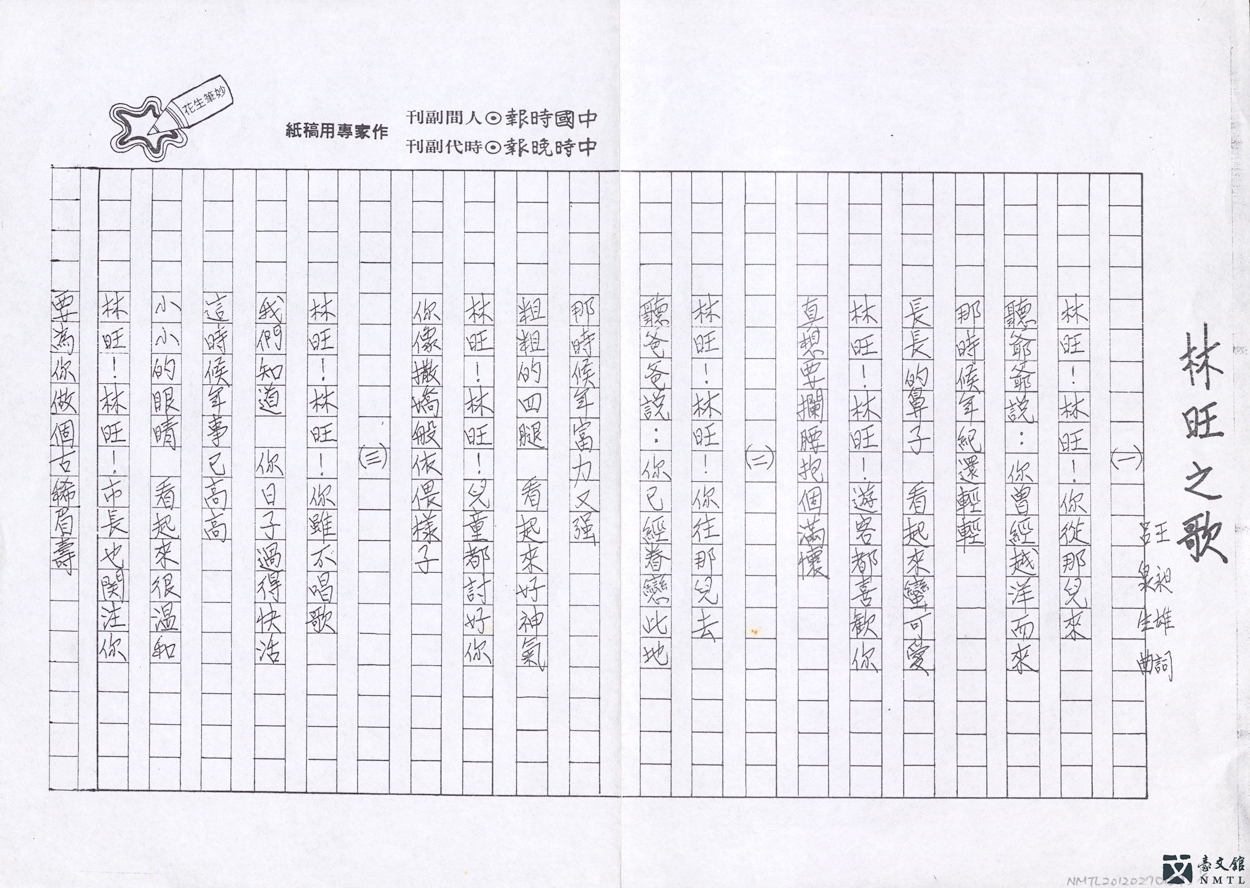
⁍ "The Song of Lin Wang"
This song is a joint effort of Wang Chang-hsiung and Lu Chuan-sheng, the former wrote the lyrics and the latter composed the music. This is the hand-written lyrics transcript by Wang Chang-hsiung. Three separate paragraphs tell about the childhood, middle age and old age of Lin Wang, the popular elephant in Taipei Zoo. (Donated by Wang Chang-hsiung / From the National Museum of Taiwan Literature permanent collection)
⨈⨈⨈ ⨈⨈⨈ ⨈⨈⨈
✦ Safeguarding Animal Rights and Welfare 𓃰 𓃸 𓃱 ...𓅼
Our categorization of animals reflects a human desire to fit the natural order of this world into our concept of civilization. But, animals need not perform to make a living, nor do they require a taxonomic hierarchy to tell them when and where to be seen. Contemporary works of animal literature shed light on another way forward – from an awareness of animal rights, the well-being of captured animals, training in the wild, to animals' development of instincts, literary writers raise concerns and critique towards what they observe.

